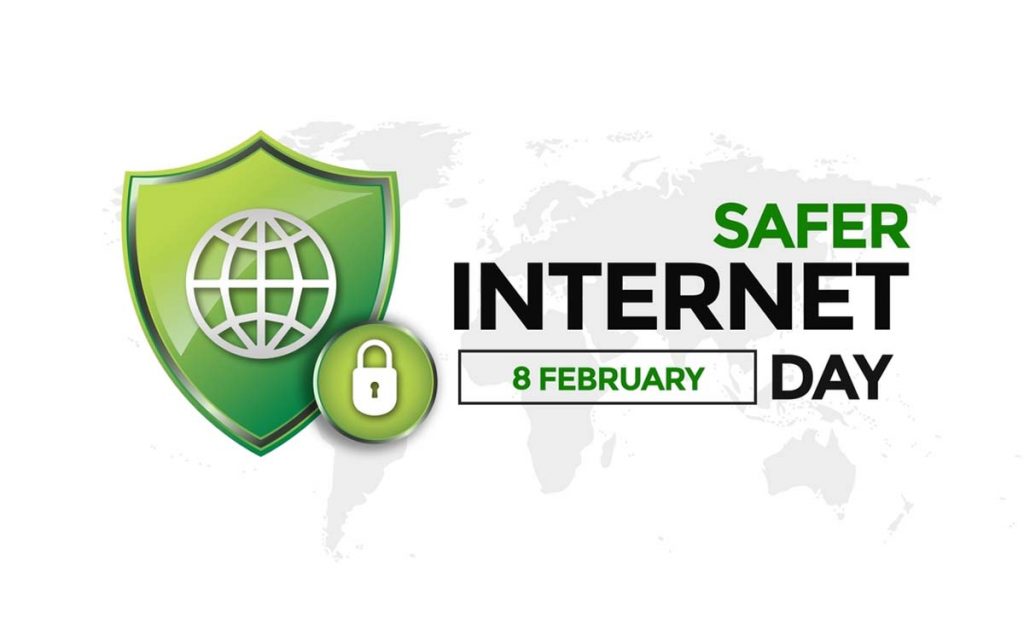Every year second day of the second week of the second month is celebrated as Safer Internet Day. This month, the second Tuesday, February 08, marks the Safer Internet Day for this year. The theme for this year’s Safer Internet Day 2022 is ‘All fun and games? Exploring respect and relationships online.’
Every year, UK Safer Internet Center organizes Safer Internet Day to educate people on the safe, responsible, and positive use of internet technology. No single body can make the Internet safer, but everyone working together can make a big difference.
January 01, 1983, marks the official birthday of the Internet. Earlier, various computer networks did not have a standard way to communicate.
On this Safer Internet Day, let’s debunk some myths and facts about the Internet –
Myth #1: Using a private browser keeps information private
Reality: Private browsing, incognito window, or in-private mode – it enables users to browse without leaving behind any local trail of passwords, history, cookies, and other assorted bits of revealing information.
But while existing a private session, the browser takes down the user’s personal information and notes the online activity. Later, the browser saves the data and shares it or sells it to third parties. This means that using a private browser prevents user information like browsing history or downloaded cookies from being automatically stored on the device. But user activity is still visible to the internet service provider and the organizations that provide internet connection (such as schools or companies). Also, the visited websites can view the session.
As a solution – Turning on private browsing mode cannot be as good an idea as it sounds. Installing a reputable virtual private network (VPN) can provide privacy and anonymity when browsing online. Even an up-to-date security suite can help users keep away from prying eyes.
Myth #2: Using public Wi-Fi is safe as everyone does it
Reality: Many public places like metro stations, airports, hotels and, schools often have this facility to provide free Wi-Fi services. But this might involve several risks.
- First, there are higher chances that the network a user is trying to join can be a fake as that might be some other network set up by an unknown nearby source trying to access the user’s information.
- Second, even if it appears to be a legitimate Wi-Fi hotspot, it still involves risks to use the same network as everyone else, as attackers can use tools to hack user devices. Even though it’s not common, but technically can be possible.
- Third, there might be chances that those who provide free Wi-Fi can (and often) collect and sell data about user browsing habits.
Another misconception is that it can be considered safe if an organization gives out the password to enter their public Wi-Fi hotspot. This again cannot be considered safer than not having a password if it’s freely given out to everyone indiscriminately.
As a solution – Individuals must avoid using public Wi-Fi wherever possible. Instead, using a personal smartphone’s cellular connection can be a better option. For using free public Wi-Fi, configuring VPN to browse anonymously can also be a solution.
While using a Wi-Fi hotspot, one should refrain from putting personal information, such as passwords and usernames, including not using email or accessing social media. And also, users must avoid performing financial transactions, such as shopping online, paying bills, day trading, or filing taxes.
Myth #3: Densely Interconnected IoT and AI devices increase the chance of private data getting hacked on the Internet
Reality: With the emergence of new devices and technology, the Internet of Things (IoT) is subsequently expanding. IoT devices include smartphones and computers to complex air quality detectors, sensors, or medical monitoring systems. All these devices generate and store more personal and sensitive information as they are part of consumers’ everyday lives.
With the increase in online shopping, wearable technology, and other online services, users are more concerned about leaked information.
As a solution – Companies are investing in sophisticated security practices to ensure user data is not compromised. Implementing proper cybersecurity practices depends on risk mitigation. Organizations are constantly updating their software and applications to keep user data secure.
The other major step that organizations can take is to avoid using generic passwords or the same passwords for multiple devices and systems. Also, multi-factor authentication provides an extra layer of security for logins and passwords. Proper risk mitigation planning, such as monitoring network intrusion or suspicious activity and developing action plans for cybersecurity emergencies, will better prepare the industry for safe IoT practices.
Myth #4: Some websites have a higher risk of viruses than others
Reality: Popular websites indeed have higher chances of virus attacks due to heavy traffic. No doubt, the security risk is present while dealing with any website equally. As more and more individuals visit the site, an attacker might find a way to redirect users to its other malicious site by providing false or infected links. Also, spying on users via sending emails containing malicious links is not new. Visiting unknown sites, primarily through social media platforms, can also be a significant risk.
As a solution – One must be careful while browsing the Internet no matter what website you visit. Another method can be installing Secure Sockets Layer (SSL) certificate. It is a security protocol that encrypts all communication to and from a website. Installing one will ensure that even if a hacker intercepts data from the website, they’ll never be able to understand what it is. Also, performing regular security checks will help uncover unsafe practices and potential vulnerabilities on the particular website.
Trivia:
Do you know? There are still individuals who are not using the Internet. It is estimated that about 37% of the world’s population, i.e., 2.9 billion people so far, have never used the Internet yet.
The International Telecommunication Union (ITU), a United Nations specialized agency for Information and Communication Technologies (ICTs), reported the global growth in Internet usage. The projected number of people who have utilized the Internet in 2019 was 4.1 billion, which surged to 4.9 billion in 2021.
About 10% of Americans don’t use the Internet today. Among those are the elderly, low-income earners, people living in rural areas, and not attending high school education. The major reasons include – no interest in using the Internet (34%), finding it difficult to use the Internet (32%), and affordability of Internet access (19%).
Bottom line
Despite several myths, the Internet was, is, and will be a major part of human life. The Internet can also be termed an omnipresent technology that connects today and forms the most acceptable communication medium.
Learning about myths and facts, this Internet Safety Day helps users make smarter online choices and use the technology to take full advantage of valuable innovations to increase the quality of life.
To know more about security and other related technology, download our latest whitepapers on security here.













